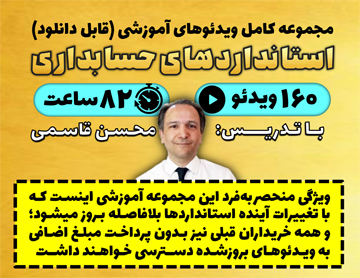اقلام پولی عبارت است از واحدهای پول نگهداریشده و داراییها و بدهیهایی که قرار است به تعداد ثابت یا تعداد قابل تعیینی از واحد پول، دریافت یا پرداخت شود. (استاندارد حسابداری 16 آثار تغییر در نرخ ارز (تجدیدنظرشده 1400))
ویژگی اصلی یک قلم پولی، حق دریافت (یا تعهد تحویل) تعداد ثابت یا قابل تعیینی از واحد پول است. مزایای بازنشستگی و دیگر مزایای کارکنان که باید بطور نقدی پرداخت شود؛ ذخایری که باید بطور نقدی تسویه گردند؛ بدهیهای اجاره و سود تقسیمی نقدی که به عنوان بدهی شناسایی میشود، مثالهایی از اقلام پولی است. همچنین، قرارداد دریافت (یا تحویل) تعداد متغیری از ابزارهای مالکانه خود واحد تجاری یا میزان متغیری از داراییها که در آن قرارداد ارزش منصفانه دریافتنی (یا قابل تحویل) آنها با تعداد ثابت یا قابل تعیینی از واحد پول برابر میشود، یک قلم پولی است. در مقابل، ویژگی اصلی یک قلم غیرپولی، نبود حق دریافت (یا تعهد تحویل) تعداد ثابت یا قابل تعیینی از واحد پول است. پیشپرداخت (یا پیشدریافت) برای کالاها یا خدمات، سرقفلی، داراییهای نامشهود، موجودیهای مواد و کالا، داراییهای ثابت مشهود و ذخایری که باید از طریق تحویل یک دارایی غیرپولی تسویه شوند، مثالهایی از اقلام غیرپولی است. (همان منبع)
Monetary items are units of currency held and assets and liabilities to be received or paid in a fixed or determinable number of units of currency - IAS 21 The Effects of Changes in Foreign Exchange Rates
The essential feature of a monetary item is a right to receive (or an obligation to deliver) a fixed or determinable number of units of currency. Examples include: pensions and other employee benefits to be paid in cash; provisions that are to be settled in cash; lease liabilities; and cash dividends that are recognised as a liability. Similarly, a contract to receive (or deliver) a variable number of the entity’s own equity instruments or a variable amount of assets in which the fair value to be received (or delivered) equals a fixed or determinable number of units of currency is a monetary item. Conversely, the essential feature of a non‑monetary item is the absence of a right to receive (or an obligation to deliver) a fixed or determinable number of units of currency. Examples include: amounts prepaid for goods and services; goodwill; intangible assets; inventories; property, plant and equipment; right‑of‑use assets; and provisions that are to be settled by the delivery of a non‑monetary asset.





دیدگاه خود را بنویسید